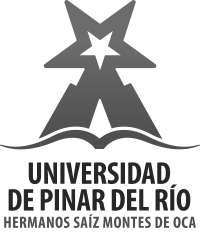Physical Education teacher competence for the inclusion of students with disabilities: an analysis
Main Article Content
Abstract
The study is part of the competence perceived by physical education teachers themselves for the inclusion of primary schoolchildren with physical disabilities. The objective is to analyze the competence perceived by physical education teachers for the inclusion of primary schoolchildren with physical disabilities, in two municipalities in the central region of Cuba. The data come from a questionnaire completed by 40 physical education teachers from two municipalities in the Cuban central region (divided into two groups of 20). Theoretical and empirical methods were used, such as the survey; from the mathematical and/or statistical level, the empirical frequency distribution. The result of the investigation reflects the description of the self-perception of the teachers of both populations, in the three dimensions, with more favorable results for the municipality of Cabaiguán. It concludes with the most favorable self-perception of the teachers of the municipality of Cabaiguán, to carry out Specific Adaptations, issue instruction to peers and security in the process of inclusion of schoolchildren with disabilities in physical education class.
Downloads
Article Details

This work is licensed under a Creative Commons Attribution-NonCommercial 4.0 International License.
References
Abellán & Sáez Gallego (2019) Percepción de autoeficacia hacia la inclusión en futuros maestros de educación física. Revista de Psicología del Deporte/Journal of Sport Psychology Vol. 28. nº1 2019. pp. 143–156
Bermúdez, M. M., & Navarrete Antola, I. (2020).Actitudes de los maestros ante la inclusión de alumnos con discapacidad. Ciencias Psicológicas, 14(1), 1–16. https://doi.org/10.22235/cp.v14i1.2107
Campos Granell, J., Llopis Goig, R., Raga, M. G., & Maher, A. (2021). Percepción de competencia para la atención de alumnos con necesidades educativas especiales en Educación Física: la voz de estudiantes universitarios de España y Reino Unido. Retos: Nuevas Perspectivas de Educación Física, Deporte y Recreación, 39.
Collado; R. Tárraga; I. Lacruz; P. Sanz. (2020). Análisis de actitudes y autoeficacia percibida del profesorado ante la educación inclusiva. Educar 2020, vol. 56/2 511. https://doi.org/10.5565/rev/educar.1117
González Rojas, Y., &Triana Fierro, D. A. (2018).Actitudes de los docentes frente a la inclusión de estudiantes con necesidades educativas especiales. Educación y Educadores, 21(2), 200-218. https://doi.org/10.5294/edu.2018.21.2.2
Lleixà Arribas, T., & Ríos Hernández, M. (2020).Formación del profesorado en educación física e inclusión del alumnado con pluridiscapacidad. Revista Interuniversitaria de Formación Del Profesorado, 34(1), 49–68. http://web.a.ebsc ohost.com.ezproxylocal.library.nova.edu/ehost/pdfviewer/pdfviewer?vid=4&sid=11fbf806-1e21-4df2-bb4e-9c6ef6f5175e%40sdc-v-sessmgr02
Lobo de Diego, F. E., Manrique-Arribas, J. C., & Pérez-Brunicardi, D. (2022). Perceived Educational Quality of a Municipal School Sports Programme. Apunts Educación Física y Deportes, 150, 28-35. https://doi.org/10.5672/apunts.2014-0983.es.(2022/4).150.04
Marín-Suelves, D., & Ramón-Llin, J. (2021). Physical Education and Inclusion: a Bibliometric Study. Apunts. Educación Física y Deportes, 143, 17-26. https://doi.org/10.5672/apunts.2014-0983.es.(2021/1).143.03
Murillo Parra, L D; Ramos Estrada, D Y; García Cedillo, I y Sotelo Castillo, M A. (2020). Estrategias educativas inclusivas y su relación con la autoeficacia de docentes en formación. Revista Actualidades Investigativas en Educación, 20(1), 1-25.Doi. 10.15517/aie.v20i1.40060
Nieva, C., Lleixà, T. (2018) Inclusión de las niñas inmigrantes y creencias del profesorado de educación física. Inclusion of Immigrant Girls and Beliefs of Physical Education Teachers. Apunts. Educación Física y Deportes. 2018, n.º 134. 4.ºtrimestre (octubre-diciembre), pp. 69-83. ISSN-1577-4015
Jiménez Monteagudo, L., & Cuevas Campos, R. (2013). Aproximación a un perfil de competencias en educación física adaptada del profesional de ciencias de la actividad física y del deporte. Tándem: didáctica de la educación física. http://hdl.handle.net/11162/180089
Paz Maldonado, E. (2020). Inclusión Educativa del Alumnado en Situación de Discapacidad en la Educación Superior: Una Revisión Sistemática. Revista Interuniversitaria, 32(1), 123-146. https://web.a.ebscohost.com.ezproxylocal.
Reina, R., Huztler, Y., Iñiguez-Santiago, M. & Moreno Murcia, J. (2019). Student Attitudes TowardK Inclusion in Physical Education: The Impact of Ability Beliefs, Gender and Previous Experiences. Adapted Physical Activity Quarterly, 36 (1), 132-149
Rhenals-Ramos, J. C. & Arango-Paternina, C. M. (2022).Implementation of a Pedagogical Vocabulary of Signs in Physical Education. A Pilot Study. Apunts Educación Física y Deportes, 148, 17-25. https://doi.org/10.5672/apunts.2014-0983.es.(2022/2).148.03
Valencia Peris, A., Mínguez-Alfaro, P. &Martos-García, D. (2020). La formación inicial del profesorado de Educación Física: una mirada desde la atención a la diversidad. Retos. Nuevas tendencias en Educación Física, Deporte y Recreación, 37, 597-604


